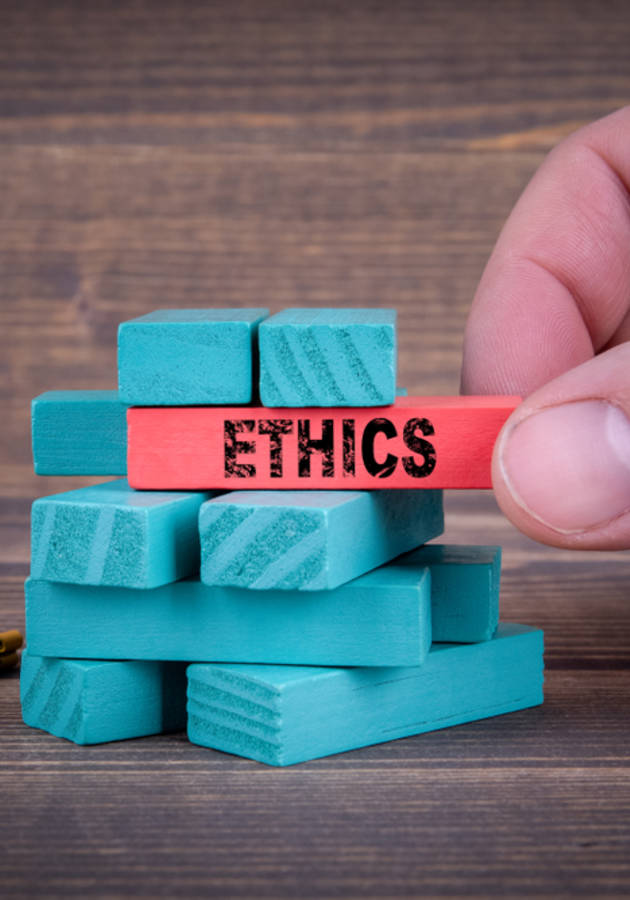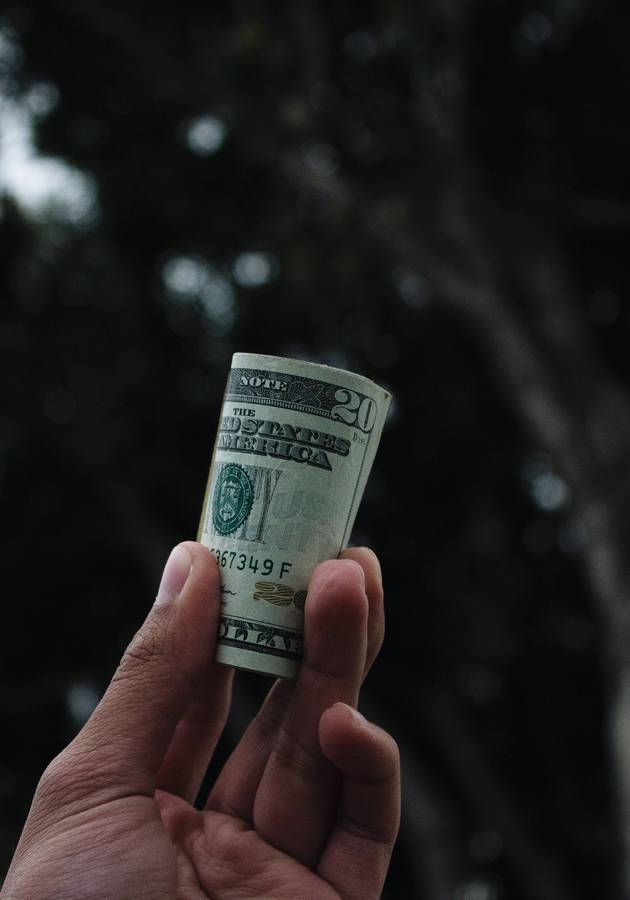Some products, ideas, and behaviors succeed. Others, quite similar to them, fail. In “Contagious,” Wharton marketing professor Jonah Berger, tries to solve the why-mystery. What makes some YouTube videos more popular than others? What makes online content go viral? What makes some things ultra-popular? Astonishingly enough, the answer is not “it depends.” Quite the opposite, in fact: there is a secret science behind popularity, and Berger understands it more than anyone.
So, get ready to discover the six basic principles that make something contagious, and learn how to use them to start the perfect word-of-mouth campaign!
Sandwiches and names: the mystery of why things catch on
Some things are more popular than others. In many cases, this can be explained by three obvious reasons: quality, price, and advertising. Simply put, if a product is more superior, cheaper, or better marketed than its competitors, there’s no real mystery why it should be more fashionable and sought-after than them.
But, consider the case of Barclay Prime, a Philadelphia luxury boutique steakhouse founded in 2004 by Howard Wine. In an attempt to make his restaurant stand out – and give people a sense of its uniqueness – soon after its launch, Wine introduced to its menu a hundred-dollar cheesesteak, the most expensive in the world. Even though there was no advertisement campaign, the response was incredible: people didn’t just try the sandwich, but they rushed to tell the others. In time, it became all the rage in Philly, and people stood in lines to merely get a glimpse of it. “Wine didn’t create just another cheesesteak,” writes Berger, “he created a conversation piece.”
Now, even though Barclay Prime didn’t invest money in advertising and certainly didn’t offer a cheaper alternative to the standard Philly cheesesteak, one can still argue that its $100 cheesesteaks were simply better than any of the $5 alternatives available. If you think that’s the case, then take the first names Olivia and Rosalie.
Both are great names for girls and are pretty similar: they are about the same length, they end in vowels, they can be shortened to handy, cute nicknames, and they are both associated with similarly beautiful things (olive trees and roses). And yet, there are 30 times more Olivias in the United States than there are Rosalies! Why’s that?
Social influence and word of mouth
It’s quite evident that none of the traditional explanations – quality, price, advertising – can explain why Olivia should be a more popular name than Rosalie: neither of the names is better than the other, both names are obviously free, and there are no advertising campaigns to try to get people to name their kids Olivia. A similar analysis can be done with YouTube videos, all of which are free to watch, most of which have low-production values, and very few of which receive a marketing push. Then, why one YouTube video gets more views than another?
The answer in both cases is one and the same: word of mouth. When it comes to virality and social contagion – nothing is more powerful than that. Believe it or not, word of mouth is the primary factor behind 20 to 50% of all purchasing decisions! How can it not be? People like to share things, which is why there are more than 100 million conversations about brands every hour, and every day more than 16,000 words shared by an average internet user online!
So, in other words, social transmission is ubiquitous. It is also quite affordable: because social media amounts to only 7% of our total word-of-mouth communication, you don’t even have to own a computer to fully participate. Finally, as opposed to paid testimonials or even Facebook ads, this type of sharing usually produces results as well, because it is honest and targeted by design. After all, you wouldn’t recommend to any of your friends a $100 sandwich if you didn’t really enjoy it – and you certainly wouldn’t recommend it to your vegan girlfriend!
Six principles of contagiousness
Now, if word of mouth affects our purchasing decisions to such an extent, the next question – especially if you are in marketing or sales – is pretty self-evident: how does one generate word-of-mouth worthy content? True, some things are just naturally more infectious than others (not many people would prefer toasters over smartphones, for example) but, after analyzing hundreds of contagious messages, products, and ideas, Berger and his team discovered some patterns, themes, and attributes – “a recipe, if you will, for making products, ideas, and behaviors more likely to become popular.” The recipe needs just six ingredients, six key principles that cause things to be talked about, shared, and imitated. These principles can be compressed into an acronym: taken together, their first letters spell STEPPS with double P. So, think of them in just that manner: as the six STEPPS to crafting contagious content.
Principle 1: Social Currency
To become contagious, an idea or a product must first become a social currency – that is, something that will make the person who knows and shares the knowledge about that idea or product feel smart, important, rich, or cool. In short, we share things that make us look good. So, to get other people talking, you need to craft content that will help them pull off the desired results. There are three ways to achieve this:
- Find inner remarkability. “The most important aspect of remarkable things,” writes Berger, “is that they are worthy of remark.” Just listen to this simple fact: “a ball of glass will bounce higher than a ball of rubber.” Now, ask yourself: would you keep it to yourself or share it with your friends? We already did: because it’s impressive in itself and, by association, makes us look good for simply knowing it.
- Leverage game mechanics. People like games so much that some cultural theorists think that it’s playing them that essentially makes us human. Contagious things find ways to use this love to their benefit. Just think of all those frequent flier programs or badge-earning contests! They are games – and they make you share your accomplishments with others.
- Make people feel like insiders. Private sales use scarcity and exclusivity to make customers feel like insiders. Buying something at a private sale doesn’t only say – “I bought this there”. It also says – “I’m one of the chosen ones.”
Principle 2: Triggers
The word “dog” reminds most people of the word “cat,” and peanut butter reminds most people of jelly. This is how a trigger works – it is a stimulus that prompts people to think about related things. But how does something become related to something else is an entirely different thing. In essence, the logic is almost circular: “the more often people think about a product or idea, the more it will be talked about.” Or, to use a common expression: top of mind, tip of tongue.
There are just too many factors one should consider to create a product that will be triggered by the environment. However, some of the most important ones are the following:
- Frequency. How often does the stimulus that should trigger your product or idea occur? For example, people think more about coffee than they think about hot chocolate.
- Strength of association. How strong is the link between the stimulus and your product? The color red, for example, is associated with too many things to be a strong trigger for only one idea; however, not many things other than the Simpsons are yellow on TV.
- Geography. Is the strength of the association universal or geographically dependent? For example, people think and talk about beef cheesesteaks much more in Philadelphia than in Chicago – and probably not at all in India.
- Time of the year. People are much more likely to think, talk, and buy orange-colored products (orange soda or Reese’s Pieces) one day before Halloween than a week after – no matter how unrelated these products are to the holiday. Blame the triggers, of course.
Principle 3: Emotion
On October 27, 2008, Denise Grady wrote a pretty technical piece for The New York Times titled “Mysterious Cough, Caught on Film.” Within hours of publication, thousands of people decided to pass on the article to other people. The reason for the text’s virality wasn’t its content or its subject matter – but a simple image illustrating a cough in a previously unseen manner. The underlying cause people shared Grady’s article that day was emotion. Simply put, when we care, we share. Even simpler: if you want to incite other people to share what you write, evoke some emotion in them.
There is a catch, though: not all emotions are equally legitimate. For example, if your idea or product can stimulate something like awe in your consumers, then you’ve hit a homerun: awe-inspiring videos, articles, and news are some of the most shared in history. Sadness has the opposite effect, but content that evokes anger or anxiety boosts sharing. Interestingly enough, happiness does not, especially if not combined with amusement. So, to become viral evoke emotions – but evoke the right ones. And don’t forget that sometimes – such as in stop smoking campaigns – the right emotions might be negative.
Principle 4: Public
As the famous phrase “monkey see, monkey do” suggests, people tend to imitate other people quite uncritically. However, the phrase also implies something far more important: namely, that one first needs to see something to copy it later.
Because of this, if you want to make something contagious, you need to offer a social proof of its existence, you need to make it observable. If something is built to show, it is built to grow as well. There are three ways you can achieve this:
- Make the private public. The logo on an Apple laptop doesn’t face the user who owns it, but the other people around the user.
- Design products that advertise themselves. Have you ever wondered why the default signature line of your email is “Sent from my iPhone”?
- Employ behavioral residue. Some things serve as better reminders than others because they have a longer shelf life. Photographs and videos of a Lance Armstrong bike ride across America have been quickly forgotten, but the Livestrong wristbands he wore are still around to take us back to 2003. They are behavioral residue.
Principle 5: Practical Value
People like to help others, so if you can show them an innovative product or an idea that will save them some time or money, they will immediately spread the word. In other words, give your consumers news they can use. However, since people don’t evaluate things in absolute terms, there are a few tricks that may help you to provisionally add some value to your product and make it seem like a particularly good deal:
- Create a high reference point. Most infomercials use this strategy: they mention prices such as $100 or $200 as the ones you might expect to pay for their product and artificially make the final price of $39.99 a steal.
- Take our diminishing sensitivity into consideration. If you could save $10 on a new coat worth $35, you’ll probably agree to drive ten more minutes to a different shop. However, if you could buy your new TV at a different shop for $640 instead of $650, you’ll probably pass. Why? In absolute terms, in both cases, you save $10. However, in relative terms, $10 can make a difference only in the case of the lower-priced item. Well, this is why if your product is cheap, it’s smarter to state your sale price in terms of percentage reduction. If it is expensive – state the discount in dollars.
Principle 6: Stories
People rarely share bare facts or ideas: most of the time, they distribute them by wrapping them inside an engaging narrative. “Just like the epic tale of the Trojan Horse,” writes Berger, “stories are vessels that carry things such as morals and lessons. Information travels under the guise of idle chatter.” So, start building your own Trojan horses, embedding your products and ideas in narrative arcs that people would want to tell.
However, never forget that people are inclined to change stories as they tell them, so don’t embed your idea in the story’s details. Make your message “so integral to the narrative that people can’t tell the story without it.” Remember Jared Fogle. Now a disgraced convict, the guy became famous in 1999 when he lost 245 pounds eating a diet of Subway sandwiches. There are a lot more details to his story, but in every version, you can’t tell it without mentioning Subway. This is called “valuable virality” and is what you should strive for!
Final Notes
Endorsed by celebrated psychologists such as Dan Ariely and Daniel Gilbert – and dubbed “the practical companion to Malcolm Gladwell’s “The Tipping Point” by Discover magazine – “Contagious” is well-researched, nicely written, and satisfactorily illuminating.
If you want to go viral – start here.
12min Tip
Don’t confuse the tools with the project: as Berger says, “Facebook and Twitter are technologies, not strategies.” In other words, they are not what will make your product or idea contagious. The six STEPPS will.




























